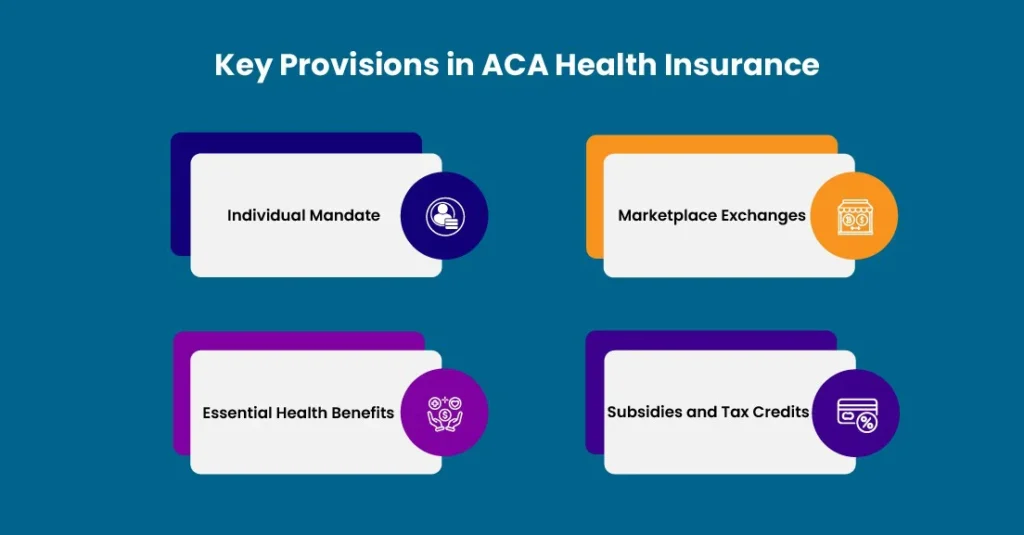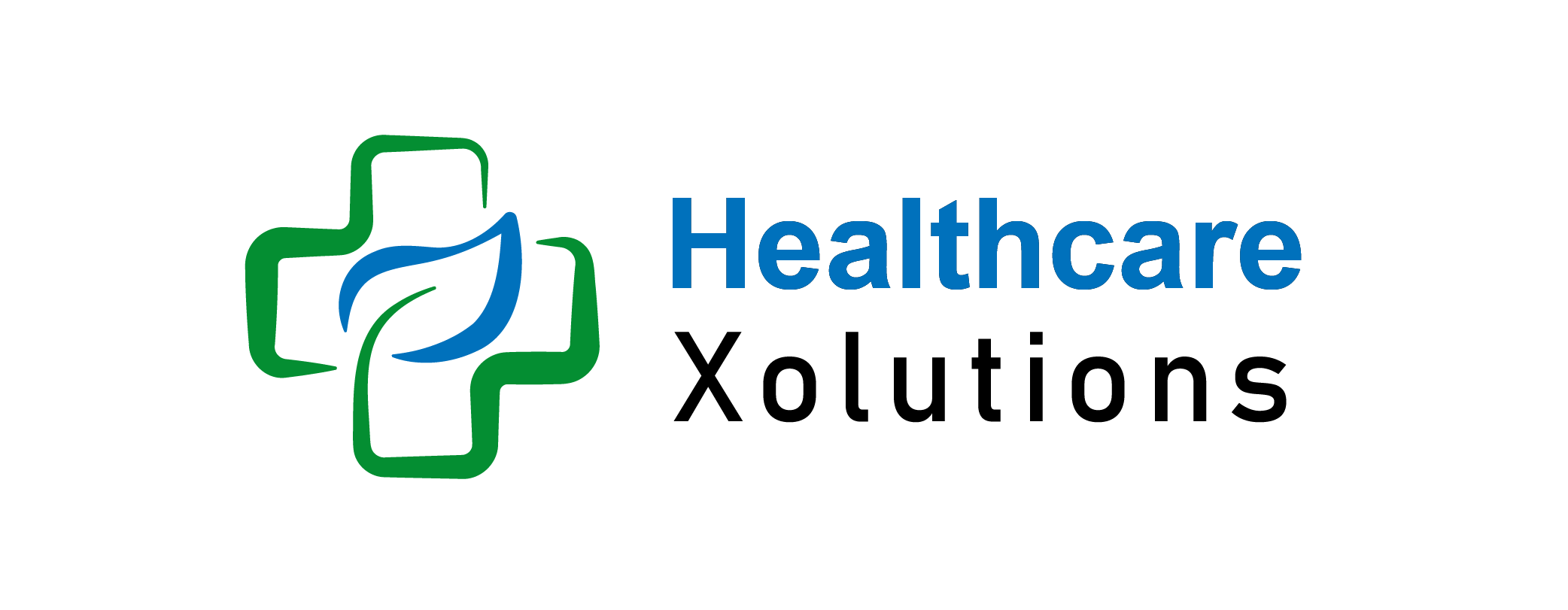What Is ACA Insurance? The Only Guide You Need To Know

The healthcare system in the USA is considered to be complex and harbors many obstacles, leaving a lot of Americans with no medical insurance at all. In 2010 the Affordable Care Act, typically called ACA or Obamacare, was enacted to address this issue by extending access to inexpensive health insurance.
With its execution, the ACA has made different health insurance models that were previously in existence more relevant and even introduced new ways of structuring insurance and delivering health care services. The legislation plays a pivotal role in giving so many people in the US the privilege of using the health services they require without having money as a problem.
In this blog, we will delve into the elaborateness of ACA health insurance, its key components, benefits, challenges, and how individuals can navigate through the system to find the coverage that suits their needs.
Table of Contents
Understanding The Key Provisions of ACA Health Insurance:
The ACA introduced several key provisions that reshaped the healthcare landscape:

1. Individual Mandate:
Among the most important elements of the ACA was the individual mandate, according to which people were supposed to have health insurance, which covered almost everyone except the people who were poor or were exempted for some reason. Although this provision was abolished in 2019, it had a vital role in expanding access to healthcare and maintaining a healthier risk pool.
2. Marketplace Exchanges:
It paved the way for the creation of marketplaces that are accessible online and known as Health Insurance Exchanges where people can find and subscribe to health insurance plans. These marketplaces provide a diversity of opportunities including differing deductibles and subsidies administration for those who are eligible. Thus, it helps the eligible candidates to bring down the premiums.
3. Essential Health Benefits:
ACA dual-compliant health insurance plans are mandated to cover the entire package of required health benefit diameters, these include preventive services, prescription drugs, in-patient care, services for mental deviation, newborn care, and the rest. Hence, this guarantees that people will have unlimited coverage as long as they can get into those networks.
4. Subsidies and Tax Credits:
Subsidies and tax credits that are offered by the ACA to help people with low incomes or moderate incomes buy health insurance are designed to make health insurance more affordable. Under these financial aid programs, the coverage price is made more reasonable as the cost of premiums and out-of-pocket expenses for most people is subsidized, thus helping them find and engage in a convenient health care system.
Benefits & Drawbacks Of ACA Insurance:

Benefits:
The ACA has brought about numerous benefits for individuals and families across the country:
1. Increased Access to Coverage:
Even before the Affordable Care Act (ACA), it was pooled together that only a handful of Americans were able to access health insurance. This rings particularly true for those who priorly carried the conditions and those who could not afford the insurance coverage. Nevertheless, ACA has brought some reforms for opening a door of access to insurance for a population of the whole of the U.S. When utilized efficiently, this measure represents a standalone option for promoting health insurance enrollment. As a result, the average uninsured rate in the country was greatly reduced. The ACA still bears these achievements as its crowning attribute and keeps working on devising measures that can provide universal care to every American.
2. Consumer Protections:
ACA-compliant health plans are not allowed to utilize haphazard consumer protection rules, like denying coverage to a person with a preexisting health condition or excluding fundamental health benefits, such as preventive care, drug therapy, and hospitalization. The initiative provides insurance customers with guarantees against unethical insurer behavior and guarantees that they are appropriately covered.
3. Preventive Care Services:
The ACA stipulates that preventative care services, including screenings, vaccinations, and wellness visits, are covered without cost-sharing by the beneficiary. The above-mentioned prevention sometimes leads a person to be healthy until as far as it resorts to detection and treatment of health conditions at an early stage and results in the reduction of the total healthcare expenses.
4. Financial Assistance:
ACA has a provision for those who cannot afford the high cost of purchasing health insurance by subsidizing a portion or whole pay for their health coverage. The ACA achieves this by distributing premium subsidies and tax credits thus many Americans will have an opportunity to enjoy affordable care. Such programs are purposely enacted to reduce patients’ premiums and copayments to impoverished ones that will enable them to prioritize their health instead of financial security. Initiatives like this are undeniably a first step aimed at guaranteeing healthcare access to the whole population, financial position notwithstanding.
Drawbacks:
While the ACA has made significant strides in expanding access to healthcare coverage, it has also faced challenges and criticisms:
1. Affordability Concerns:
Along with the subsidies that the government provides our healthcare system to make it more available, some people still have financial difficulty paying health insurance premiums and out-of-pocket expenses. This can largely be attributed to the rise in expenses in healthcare if this is combined with the fact that wages in developed economies have experienced no growth recently. Overwhelmingly, this is the crux of this dilemma around access to medical services for a majority of Americans who are not entitled to subsidies.
2. Market Stability:
The main problem with ACA the customer’s insurance market is federated around the instability of markets. From this way, we can see how the insurer’s exit and the changes in their premium rates made the situation become the thing of reality. Herein lies the concern as raised by some analysts, which stands to account for the difficulties that are encountered by insurance customers operating on the individual market when the turmoil is brought about due to the legal risks that may be overcome.
3. Limited Provider Networks:
To round it all up, such ACA health insurance plans (some of them will most likely) are also probably to exhibit a smaller provider network, a factor that implies a lesser amount of access to health care providers and other related benefits. Patients who live in the cities and elderly people might face influence on finding providers in the network of their insurance. In such a case, he or she may not be able to access primary medical attention as the disease may have entered into advanced stages.
4. Political Divisiveness:
The Affordable Care Act (ACA) continues to be a highly controversial topic in the political sphere, with ongoing debates about its effectiveness and shortcomings. The law has been subject to numerous attempts to repeal or undermine its provisions, leading to significant uncertainty and confusion for consumers, insurers, and healthcare providers alike. This has created several challenges for the stability and effectiveness of the healthcare system, including issues related to access to care, affordability, and quality of services. Despite these challenges, the ACA remains an important piece of legislation that has expanded access to healthcare for millions of people across the United States.
Navigating The ACA Health Insurance System:
The ACA can make the health insurance system look overwhelming for people or families who try to get covered through the program.
Here are some tips for making the process smoother:
1. Explore Your Options:
You may begin your search by browsing the Health Insurance Marketplace to find out the kind of plans available in your location. You can shop around different insurers by looking at premiums, deductibles, provider networks as well as the benefits you get to choose a policy that suits your needs and the amount of money that you can pay for.
2. Determine Your Eligibility:
Go through the subsidy or tax credit matrix that you may be eligible for, depending on your household size and income. These financial service programs can bring down the cost of coverage substantially which can effectively make health insurance more affordable for eligible households and individuals.
3. Understand the Enrollment Periods:
Make sure you don’t miss the open enrollment period for Health Insurance (ACA). It usually takes place in November through December of every year. Further, there is a place for you to solely be covered for this period. The qualifying life events like getting married or having a baby, are fulfilling the only destinations in that case.
4. Seek Assistance If Needed:
Everybody is entitled to a helping hand when navigating the ACA health insurance system, in case of doubt, don’t hesitate to ask for assistance Specialized enrollment counselors, insurance brokers and community organizations play a pivotal role in providing information, clarification, and advisory services to empower you to make better decisions on which plan to choose and make the open enrollment process stress-free.
5. Stay Informed:
Be aware of the altered terms of the ACA and what new health insurance coverage requires you to stick to. This involves the comprehension of any changes of charges, benefits, or provision networks, along with being current with your role and entitlements as the consumer.
Conclusion:
The Affordable Care Act (ACA) has been a transformative force in the US healthcare system. It has expanded access to coverage, implemented consumer protections, and provided financial assistance to millions of Americans. By understanding the basics of ACA health insurance and utilizing available resources, individuals and families can make informed decisions about their healthcare coverage and access the care they need to lead healthy lives.
However, challenges remain. Rising healthcare costs, affordability issues, and the need for improved customer experience are ongoing concerns. Addressing these challenges will be crucial for the continued success of the ACA.
The future of the ACA involves adapting to technological advancements, addressing health disparities, and fostering collaboration among stakeholders. By proactively addressing these areas, the US can further improve its healthcare system and ensure that all Americans have access to affordable, quality care.
FREQUENTLY ASKED QUESTIONS:
Q: What is the most expensive type of health insurance?
Platinum health insurance is the highest-priced level of health insurance you can buy. You pay expensive monthly premiums. In exchange, you get a low deductible, out-of-pocket maximum, copays, and coinsurance. A Platinum health plan will best fit you if you have serious or chronic health concerns.
Q: Can non-US citizens buy health insurance?
Lawfully present immigrants can get Marketplace coverage and may qualify for premium tax credits and other savings on Marketplace plans.
The term “lawfully present” includes immigrants who have:
- “Qualified non-citizen” immigration status
- Humanitarian statuses or circumstances (including Temporary Protected Status, Special Juvenile Status, asylum applicants, Convention Against Torture, and victims of trafficking).
- Valid non-immigrant visas.
- Legal status conferred by other laws (temporary resident status, LIFE Act, Family Unity individuals)
Q: Is Obamacare only for US citizens?
To be eligible to enroll in health coverage through the Marketplace, you must: Live in the United States (U.S). Be a U.S. citizen or national, or be lawfully present as a non-citizen in the U.S. Learn about eligible immigration statuses. Not be incarcerated.
Q: What happens in America if you can’t afford healthcare?
Nonprofit hospitals in the United States are required by federal law to provide financial assistance to patients who are unable to pay their medical bills. In addition to federal regulations, some states have their own laws about uncompensated care. For instance, in Washington state, hospitals are mandated to inform patients about the availability of financial assistance programs when they seek medical care. These initiatives aim to ensure that patients are not burdened with the high cost of medical treatment and can receive necessary care without financial hardship.
